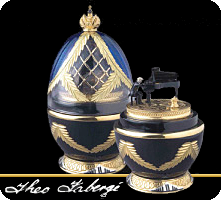
By CORINNA DA FONSECA-WOLLHEIM
Published June 13, 2012
New York
Melvin Stecher and Norman Horowitz have shared not just a stage but also a piano bench for more than 40 years. As the Stecher & Horowitz Duo they were one of the most successful piano duos of the past century. Over time, though, their ability to share has extended into the realm of education, which they fostered through publishing ventures and a music school in Cedarhurst, N.Y., that graduated some 15,000 pianists. It might seem odd, then, that their most recent venture is a competition. Then again, it’s an unusual one.
Next week, 22 young pianists come to the Manhattan School of Music to participate in the New York International Piano Competition. Founded in 2002 by Messrs. Stecher and Horowitz, the biennial competition now draws competitors aged 16 to 22 from as far afield as Indonesia, Austria and Costa Rica. But what sets it apart from other piano competitions are some unusual rules designed to guarantee that it makes a real difference in the career of a young musician, rather than merely passing judgment on it.
“When we toured in the 1950s, we played anything between 50 and a 100 concerts a year and a great deal of recitals,” says Mr. Stecher. “These community concert series have disappeared. Out of 3,000 that existed in America, there are maybe 200 or 300 left.”
The piano competition they created is an attempt to address this, both by making the process itself an intensive performing experience and by awarding numerous performance opportunities to its graduates. Through partnerships with concert presenters in New York and Washington, as well as smaller towns such as Buffalo and Ossining, N.Y., they are able to place former contestants in concerts and recitals over a period of years. “We give them the opportunity of performing, and we go to every one and we discuss them with them afterwards,” says Mr. Stecher. He and Mr. Horowitz pride themselves in building long-lasting and nurturing relationships with their contestants—and not only with the top prizewinners.
Not that they take the judging part of the competition lightly. One of their rules stipulates that no member of the jury may serve on the competition if he or she has taught one of the contestants. What sounds like a common-sense guard against a conflict of interest is in fact a radical departure from the way piano competitions are commonly run. Another unique feature, less surprising given its creators, is the competition’s ensemble round in which contestants are paired with one another for performances of four-hands piano duets.
But the most palpable difference comes from the no-elimination policy. Typical competitions take on the shape of a pyramid, with the field of contestants gradually whittled down until a select number of finalists take a stab at the top prize. In Messrs. Stecher and Horowitz’s version, the whittling down process takes place before the competition begins as they, aided by guest jurors, sift through the hundreds of submitted DVD applications to select 22 participants. Once in, each contestant takes part in all four stages of the competition, which are weighted equally. Thus a less-than-stellar performance in an early round does not necessarily spoil that contestant’s chances at winning. Just as important, it takes the bite out of the otherwise Darwinian nature of competitions, making it less adversarial—and less stressful.
For Jonathan Coombs, who won second place in the inaugural competition in 2002 at the age of 17, the defining moment came at the end, when he sat in the auditorium alongside his fellow contestants waiting for the jury’s verdict. “That’s normally the most sickening feeling, waiting to see what your fate will be,” he says. “And it wasn’t that at all. It was like a gathering of friends. The end result didn’t necessarily matter as much as what we had all experienced and gained over the week.”
To make that experience as productive as possible for the mostly teenage contestants, Messrs. Stecher and Horowitz, both 80 years old, also build in safeguards against stage parents who are overly controlling. Along with the mandatory performances of solo works, concerto movements, the four-hands duo and a specially commissioned contemporary work—this year written by Avner Dorman—they slot in a no-parents-allowed pizza party for the contestants. As Mr. Horowitz says, “as an educator, you have to set the tone. Parents resent it, but they also fear not taking your advice.”
For Mr. Coombs, winning the silver medal was the beginning of an active performing career that has since brought him to such prestigious venues as London’s Wigmore Hall and the Ravinia Festival. Ten years on, the competition has earned him more than 50 performances. In fact, when he entered Juilliard, he says, “I was one of the very few in my year that was actively performing right from the beginning.”
Just as important was the advice that came with these opportunities. Mr. Coombs says his mentors helped him develop repertoire, and built in low-risk performances—in front of high-school students, for instance—to try out new programs before presenting them to bigger audiences. The steady stream of performances in colleges and churches, synagogues, museums and regional concert halls “definitely led to other, bigger things,” Mr. Coombs says.
“Other competitions might give you performance opportunities, but they don’t necessarily care a lot about how well you do in those concerts. That’s why you have all these winners and they disappear.”
Ms. da Fonseca-Wollheim writes about classical music for the Journal.
A version of this article appeared June 14, 2012, on page D5 in the U.S. edition of The Wall Street Journal, with the headline: Eliminating the Competition.


